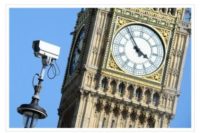More will undoubtedly be learned in the weeks and months to come about how security companies and individuals prevailed, but at press time, the following recovery efforts and survival techniques were underway.
The Protection Bureau, Exton, Pa., offered temporary jobs to out-of-work technicians. The company offered to pay transportation costs and to evaluate housing and other needs. It was working with UMCOR, which channels all its funds to emergency relief without administrative expenses. The Protection Bureau also matched every dollar its employees donated to the Gulf Coast relief effort.
The National Burglar and Fire Alarm Association (NBFAA), Irving, Texas. and the Alarm Debt Liquidation Group (ADLG) teamed up to launch a Web site designed to connect companies who could temporarily put individuals to work or offer housing or other assistance to individuals who needed help.
NBFAA asked that companies who could provide temporary employment, housing or other assistance go to the NBFAA/ADLG Helping Hands relief center at www.alarm.org and register. In addition, companies in the affected areas who had openings as a result of the permanent displacement of employees also could register.
Individuals in the alarm/security industry seeking employment as a result of Hurricane Katrina also could go to www.alarm.org to obtain information about assistance. The site is updated frequently as NBFAA receives additional offers of help.
Those who do not have access to the Internet should contact NBFAA at (888) 447-1689.
“We’ve been contacted by many companies offering to provide temporary positions for displaced professionals,†said Merlin Guilbeau, NBFAA’s executive director. “We believe that by helping people find work now, we will prevent skilled professionals from leaving the industry altogether, and we hope that when their former employers recover, they return home.
“In addition to helping to provide temporary work now, we believe that as business owners rebuild, the need to hire new staff due to the permanent relocation of their former employees will grow, and we have begun efforts to assist them with that challenge,†added Guilbeau.
The Alarm Debt Liquidation Group, a division of Anderson, Crenshaw & Associates, specializes in the collection of overdue accounts receivable for the alarm industry. ADLG may be reached at (866) 400-4550 or on the Web at www.adlg.us.
The National Electronic Security Alliance (NESA) created a Web page to enable members and non-members to list information on any individuals in life safety and security efforts of whom they become aware. NESA has permitted FARA to partner with them in this endeavor and to include individuals in public safety as well. The status of public safety and/or life safety and security individuals in the affected areas are being posted on the Web site http://katrina.nesaus.org.
Although based in Metairie, La., just outside of New Orleans, Alarm Monitoring Services is still taking signals from all over Louisiana and throughout the nation. The company had contingency plans in place that kept the central station up and running. The first step in remaining online was evacuating and moving operations to the DICE Corp.’s disaster center in Bay City, Mich.
“The last time we evacuated, the hurricane didn’t hit as hard -- people laughed at us, and we even lost some accounts,†recalled Dera DeRoche-Jolet, company president. “But after speaking with the Office of Disaster Management, I knew that New Orleans was vulnerable. It was just a matter of time.â€
DeRoche-Jolet has been planning for the likelihood of a disaster in the region for years. In addition to temporarily setting up the central station at the DICE disaster center, Alarm Monitoring Services purchased a new location in Monroe, La., about 4½ hours from New Orleans on Aug. 29, the day Katrina hit.
“I would like to thank all of our friends and customers for their overwhelming support and inquiries into our well-being,†added DeRoche-Jolet. “Although many of our staff lost their homes, everyone is safe and well. We are working hard to maintain our services even during this catastrophe.â€
The new central station in Monroe was scheduled to be up-and-running in mid-September, the company predicted.
The first time that Moe Athmann, president of Command Central, Baton Rouge, La., used the disaster mode on Manitou automation software from Bold Technologies was during Hurricane Katrina. He even set it remotely.
“When Katrina hit and power went out, we received over 1,200 signals an hour – mostly low battery or AC power failures,†recounted Athmann. “I blocked all low priority signals in the cities and parishes in those zip codes affected by the storm and just logged them, which took the load off our operators. We immediately went down to about 400 signals per hour.â€
Dan Reynolds, vice president of customer operations for St. Louis-based Interface Systems, had used disaster mode a few times in the past for smaller, more local storms, but never for one of this magnitude.
Knowing that the storm was coming and when it would hit certain areas, Interface used Bold’s mapping interface to define disaster areas, comparing them with the satellite weather map. With more than 7,000 customers in the affected area, Interface determined the priority for signals coming into the central station as soon as Katrina hit.
“Disaster mode was really pretty easy to use and did a great job of allowing us to keep up with alarm traffic in other parts of the country,†Reynolds testified. “We didn’t have a single complaint about slow response during for the entire day from non-affected areas.â€
Manitou’s disaster mode identifies how alarms are handled. They may be logged, suspended or their priority may be changed. An AC power failure normally would come across an operator’s screen. In disaster mode, it might be logged or directed to a specific work station.
Disaster mode uses a graphical interface and maps with areas designated by zip code. The feature is included with the basic Manitou system.
“We're grateful that Bold was able to help during these devastating circumstances and relieve the overwhelming event activity that central stations are faced with during this type of crisis,†Coles added.
